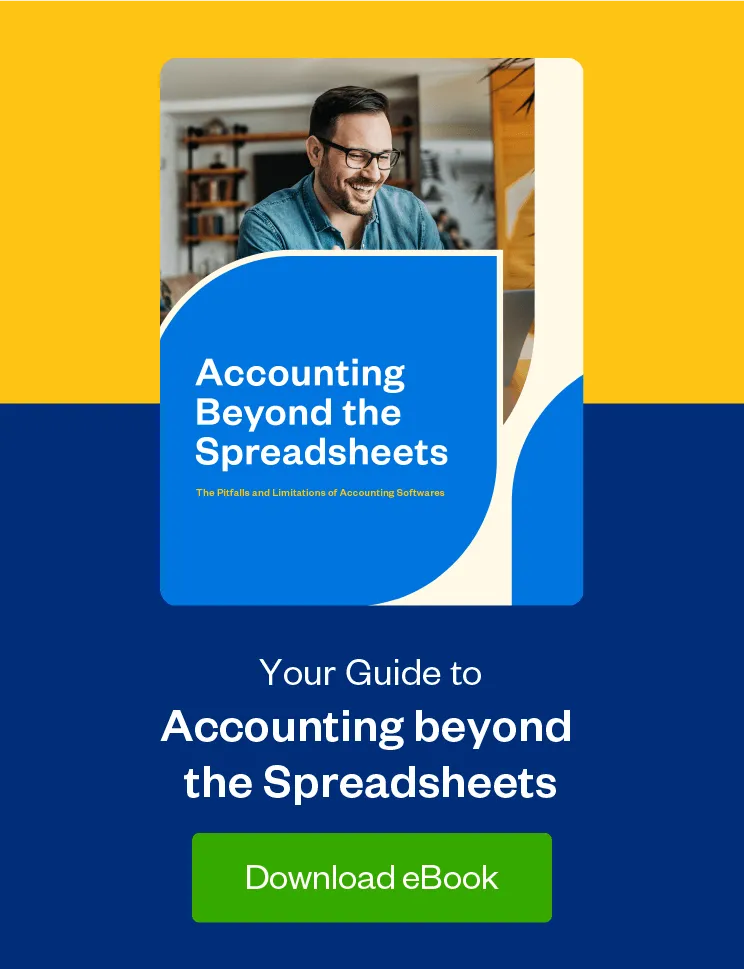If you're a self-employed Canadian, you might be paying more income tax than you need to. Here’s how to make sure that doesn’t happen.

Navigating tax season is no walk in the park, and for self-employed individuals, it can be even more complex. The maze of filing procedures may leave you scratching your head, and then there’s the eye-opening moment when you realize a significant chunk of your hard-earned business income is earmarked for income tax and Canada Pension Plan (CPP) contributions.
If you’re bringing in self-employment income, there’s no way around taxes and CPP. But just because you can’t avoid them entirely doesn’t mean they need to break your budget. There are strategies you can use to minimize their impact —and to pocket more of your self-employed business income.
Let’s take a look at some of the different ways you can lower your self-employed taxes in Canada on this year’s tax return. Keep in mind that this is a general breakdown of these strategies. Before making any tax decisions, it’s always wise to speak with a tax advisor or accountant about your particular situation.
Table of Contents
What Are Self-Employed Taxes—and Who Needs to Pay Them?
Before we dive into strategies for reducing your taxes, let’s quickly cover some self-employment tax basics.
Self-employed tax is how self-employed individuals (i.e., sole proprietors or partners in a partnership) pay income tax and make CPP contributions. If this tax seems higher than what you paid as an employee, that’s because it is. Employers and employees typically split these taxes in Canada, but a self-employed person is on the hook for the whole thing.
Anyone who has income after deducting all their business expenses from their self-employment income is required to pay tax on that income (so if you have a side hustle that’s helping pay your expenses, you may be on the hook). To calculate how much you owe for tax purposes on your net self-employment income, you’ll need to file a Schedule T2125 (Statement of Business or Professional Activities) with your income tax return.
Your income tax rate is the same as you pay on your employment income. The difference is that you must pay both the employer’s and the employee’s portion of CPP. Self-employed individuals in Canada owe the Canada Revenue Agency (CRA) 11.4% of their income, to a maximum of $7,508.90 in 2023 and $7,735 in 2024.
How to Lower Your Self-Employed Tax in Canada
Okay, now that you know what self-employment tax is, let’s jump into the strategies you can use to lower your Canadian taxes this year and bank more of this year’s business income in the process.
1. Increase Your Business Expenses
While it may seem counterintuitive, investing more in your business can be a savvy strategy to reduce your tax obligations. Here’s why:
Self-employed tax is based on net income. And because business expenses reduce your net income, they also reduce your tax owed.
That doesn’t mean you should spend money just for the sake of reducing self-employment taxes. If you do, you run the risk of spending more out of pocket than if you just paid tax on that business income.
But do think about the timing of necessary expenses. If you have the choice to spend money on December 31 or January 1, choose December 31 to take advantage of your tax deduction as soon as possible.
Eligible Business Expenses
Things like office equipment, professional fees and education, advertising costs, and office supplies are all business-related expenses that can reduce your taxable income. Basically, if it’s money spent on keeping your business running or growing, the Canada Revenue Agency considers it a business expense.
Just make sure you’re tracking all of your expenses. If you’re claiming something as a business expense for tax purposes, you need to document it. Want to simplify the process? Accounting tools like FreshBooks allow you to connect your business account to automatically track your expenses and correctly categorize them.
2. Change Your Business Structure
How you structure your business can impact how much you pay in income tax. One of the best business structures to help reduce this amount is a corporation.
When you incorporate your business, you become an employee and shareholder of your company. You pay yourself as an employee and have the option to distribute any additional income to yourself (and any other shareholders) or leave your money in the business.
So, how does this lower self-employed tax?
With a corporation, the money you pay to yourself as a salary is subject to employment taxes and CPP, deducted from your paycheques, just as it is for any other employee. Any additional income, which is paid out as a dividend, is not. Dividend income is taxed at a lower rate on your personal tax return because your corporation shares the tax burden with you. In contrast, any income you leave in your corporation is taxed at the small business rate for corporations (assuming your company qualifies for this reduced tax rate).
For example, let’s say you make $75,000 per year. If you structure your business as a corporation, you would pay yourself a salary of $75,000—pocketing $50,000 and leaving the remaining $25,000 in your corporation. On your personal tax return, you would have a T4 slip (Statement of Remuneration Paid) showing employment income of $50,000, and you’d pay tax at regular employment income rates on that $50,000.
However, you would only pay the lower business income tax rate on the remaining $25,000. If you structure your business as a sole proprietorship? That entire $75,000 is taxable income and subject to tax at regular employment income rates.
3. Look for Common Self-Employed Tax Deductions
Deductions are another way to lower your taxable income—which, in turn, will reduce your self-employment tax.
There are several deductions you can claim as a self-employed individual:
- Did you take out a loan to start your business? You can claim a deduction for the interest paid on that business loan.
- Do you use your car to meet clients regularly? You may qualify for vehicle expenses and/or a deduction based on your mileage.
- Do you pay for meals while travelling for business or take clients out to lunch? You can deduct 50% of the cost of business meals.
- Do you work from home? Claim the business use-of-home deduction on your taxes.
The point is there are plenty of deductions available for self-employed individuals—and if you want to lower your taxes, you should look for (and claim) as many deductions as possible.
4. Deduct a Portion of Your Canada Pension Plan (CPP) to Reduce Taxable Income
Another deduction you can claim as a self-employed individual is, ironically, part of your self-employed taxes.
You can deduct the employer’s portion of CPP. This deduction happens after calculating the CPP but before calculating your income taxes. Make sure to report this in the appropriate section of your tax return).
In addition, you can claim a personal tax credit for the employee’s portion of CPP you pay, even though, technically, you aren’t an employee. While this doesn’t lower your taxes, it does reduce the total amount you’ll pay to the CRA come tax time. And really, isn’t saving money what it’s all about?
5. Take Advantage of Tax Credits
Tax credits and deductions often get lumped together. But if you’re not taking advantage of both, you’re missing out on a solid opportunity to lower your self-employed taxes.
What, exactly, is the difference between tax credits and deductions? Tax deductions lower your taxable income. For every dollar you deduct, your taxes are cut by a percentage of that deduction, which is based on your marginal tax bracket. So, for example, if you’re in the 15% tax bracket, your tax is cut by 15 cents for every dollar you deduct.
Tax credits, on the other hand, lower your actual tax dollar for dollar. So, if you have a tax credit of $500, that credit will actually lower your taxes by $500. If you’re eligible for them, tax credits can dramatically reduce the amount you owe in taxes.
There are a variety of tax credits available to small business owners, for example:
- Investment Tax Credit (ITC): If you spent substantial funds on scientific research and experimental development (SR&ED), you might be eligible for ITCs on qualified expenditures. ITCs can be used to reduce your tax owing, create a cash refund, or do both. Unused SR&ED ITCs can be carried back 3 years and forward 20 years.
- Employee and Partner GST/HST Rebate: You may be eligible for this rebate on goods and services tax (GST) and harmonized sales tax (HST) if you paid expenses as a partner that were not deducted from your partnership revenue. Most of the time, this is related to business use of your personal vehicle, but it can be any expenses you paid that still need to be claimed on your T2125. Ensure you or your partnership is registered for GST/HST before taking advantage of this credit.
- Canada Workers’ Benefit: Depending on your income, you (or an eligible spouse or dependent) may qualify for this tax credit of up to $1,000 per year.
- Air Quality Improvement Tax Credit: This 25% refundable tax credit is available to eligible businesses that made qualifying expenditures to improve air quality in certain locations.
Not every available tax credit will be relevant to you and your business—but the potential for significant savings makes this a strategy worth investigating.
6. Invest in a Registered Retirement Savings Plan (RRSP)
There are a million reasons why investing in your retirement is a good idea (the least of which is having money to retire with). But if you need an added incentive to start stashing cash away, contributions to eligible investment accounts are tax-deductible. They won’t reduce your CPP contribution amounts, but they do reduce your federal and provincial income taxes.
Keep in mind that there’s no one-size-fits-all solution to retirement planning. The type of account (or accounts) that are going to make the most sense for you depends on your investment goals, savings strategy, and how much you plan to contribute each year.
Talk to a qualified financial advisor if you’re unsure how to best plan (and save) for retirement.
7. Contribute to a Health Savings Account (HSA)
One more reason to incorporate is that you can set up a Health Savings Account (HSA). As an employee of your company, you are entitled to set up benefits, the most flexible of which is an HSA.
With an HSA, you can use pre-tax dollars to cover qualified medical expenses, including deductibles, coinsurance, and copayments.
Because contributions aren’t taxable to you as an employee, the money you put into your HSA will lower your taxable income. HSAs can also roll over from year to year, so you can continue carrying those tax-free savings.
If you’re not sure if you qualify, talk to your insurance company to determine if your business qualifies for an HSA.
Pocket More Business Income This Tax Season
For self-employed individuals in Canada, taxes can be a tricky beast.
It’s a double-edged sword: The higher your business earnings, the higher your tax bill—and the less you’ll have in your bank account. Unless you find ways to lower your taxable income and tax obligations.
But now that you know the best strategies to lower your taxes when self-employed, you have everything you need to keep more of your profits in your pocket year after year.
This post was updated in December 2024.

Written by Melanie Schroeder, CPA, Founder and CEO, Out of the Box Chartered Professional Accounting
Posted on March 13, 2023

 Canada Tax: Your Guide to the T2125 Form
Canada Tax: Your Guide to the T2125 Form Understanding T777: Statement of Employment Expenses
Understanding T777: Statement of Employment Expenses Got an Active Side Hustle? Set Yourself Up for Success
Got an Active Side Hustle? Set Yourself Up for Success





